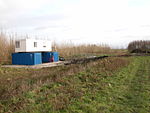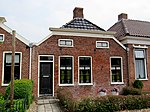The IJkdijk is a facility in the Netherlands to test dikes and to develop sensor network technologies for early warning systems. Furthermore, the sensor network will be able to detect many water-related environmental factors that affect the health of humans such as pollution and biological changes. Disasters on rivers and coastal waters are also detected.
In studies of dike stability, about eighty dikes will be destroyed and establish, ultimately, a relation between the sensor readings and the future of the dike. Hence the (in Dutch) good-sounding name IJkdijk: dijk=dike and ijk is from the Dutch word ijken=to calibrate (models). Clearly the most urgent goal here is to forecast dike failures. In contrast to popular belief, most disasters with dikes occur because they are too wet and not because they are too low. Another major source of dike failures are streams of water flowing through the dike, ultimately destroying, through erosion, the dike from the inside. A detection system for these failure mechanisms might be cheaper and safer than the alternative: over-dimensioning by adding more clay. As dike improvements are very costly, e.g. 500 euros per meter, there is ample financial room to pay for the sensor system. The IJkdijk will also increase the geophysical understanding of dike behavior. A better understanding of dikes, expressed in a sensor-based early warning system in dikes, prevents unnecessary and costly over-dimensioning. That is good news for the owners of millions of kilometers of dikes that exist nowadays and the developers of millions of kilometers of dikes that will be constructed in the future.










